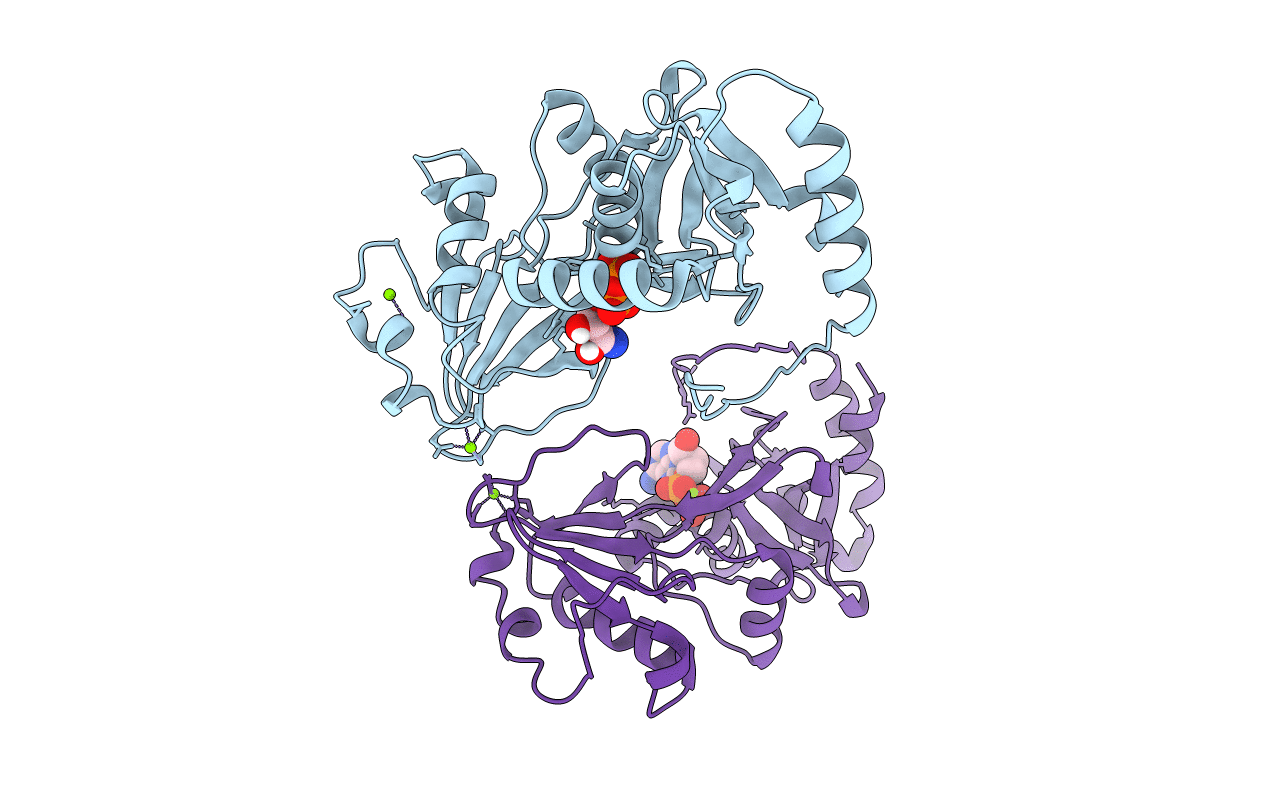
Deposition Date
2019-01-22
Release Date
2019-06-19
Last Version Date
2024-11-20
Entry Detail
PDB ID:
6NR6
Keywords:
Title:
Crystal Structure of Staphylococcus pseudintermedius SbnI in complex with ADP
Biological Source:
Source Organism:
Staphylococcus pseudintermedius (Taxon ID: 283734)
Host Organism:
Method Details:
Experimental Method:
Resolution:
1.90 Å
R-Value Free:
0.24
R-Value Work:
0.20
R-Value Observed:
0.20
Space Group:
P 21 21 2


